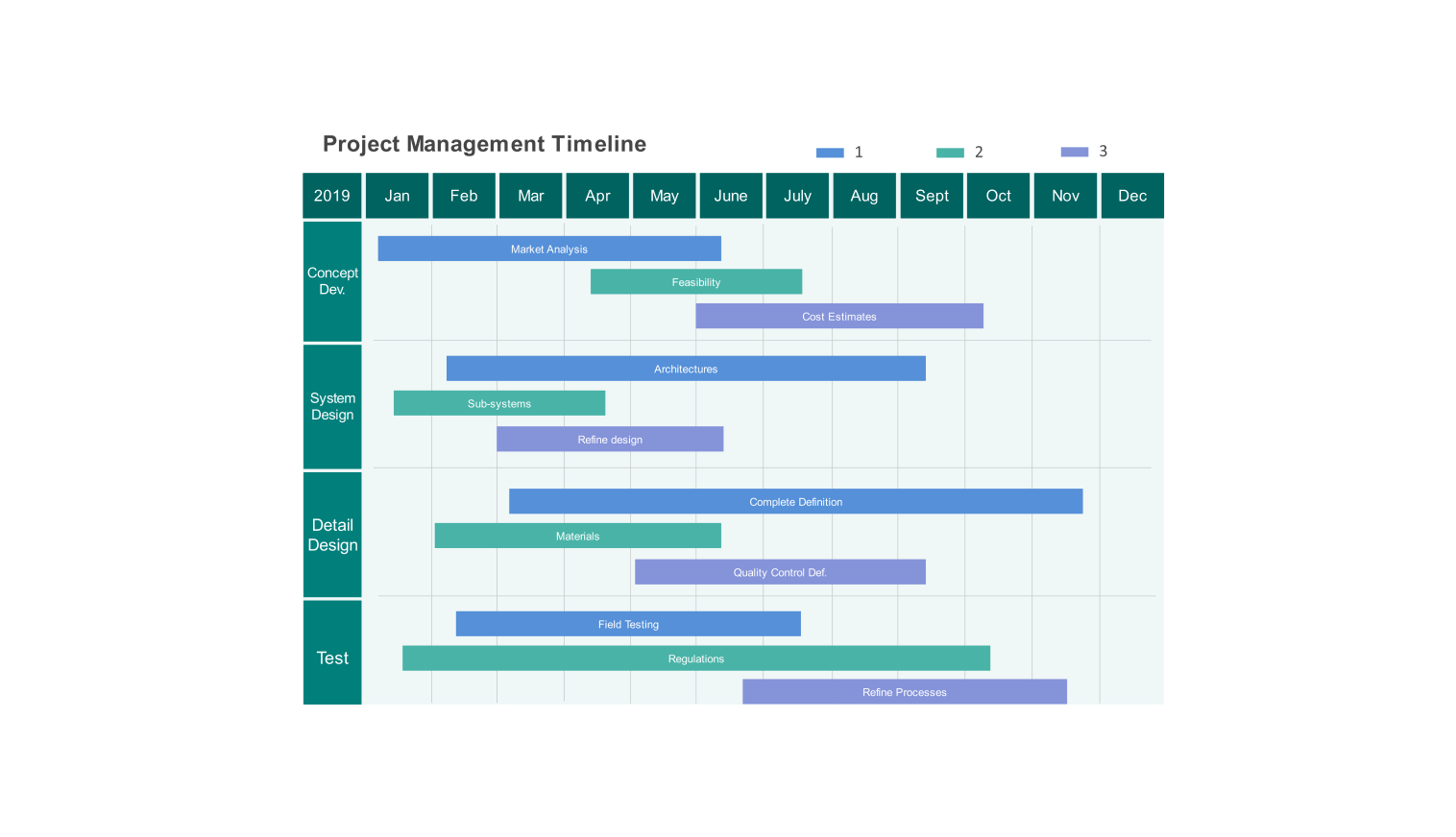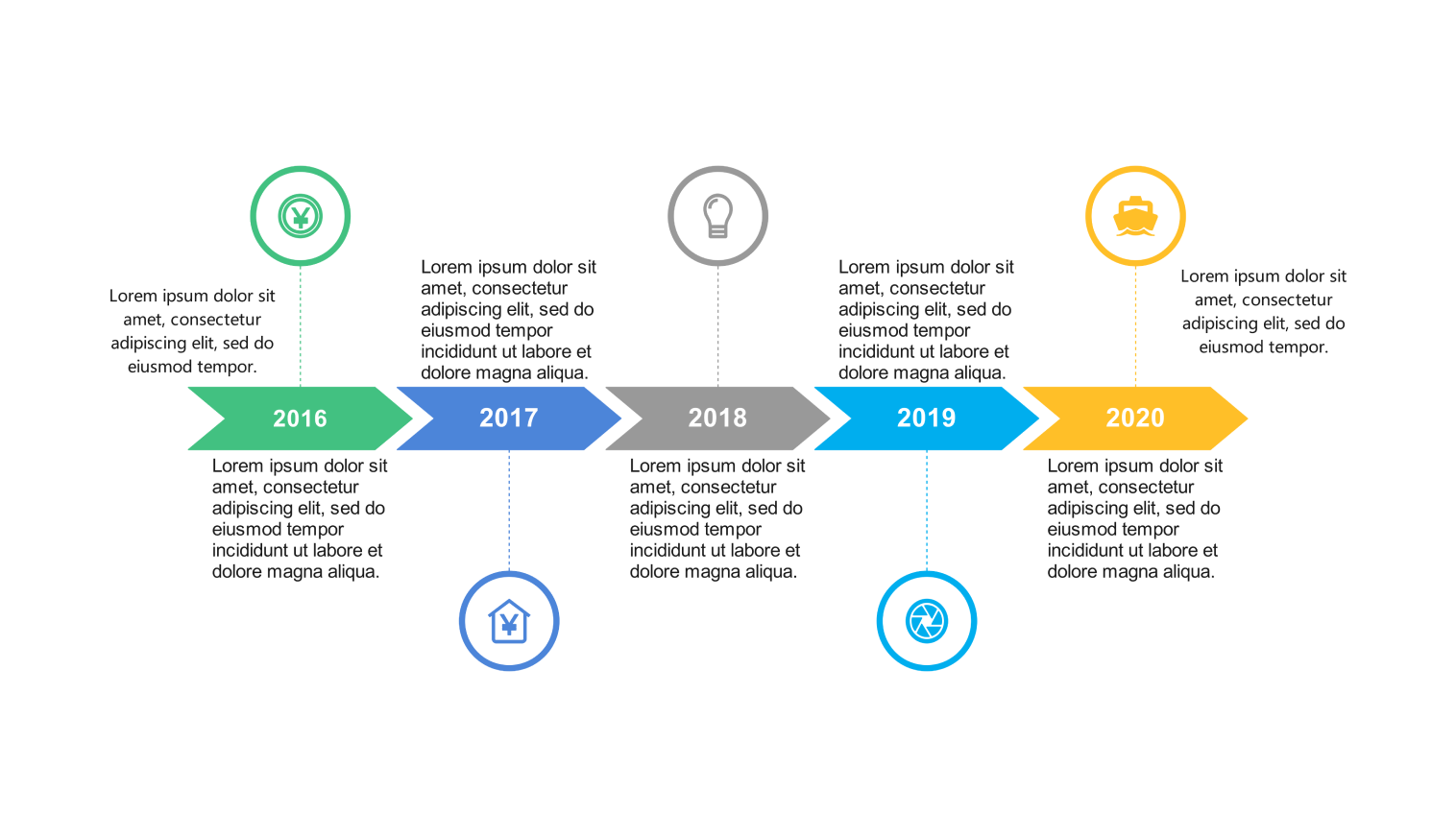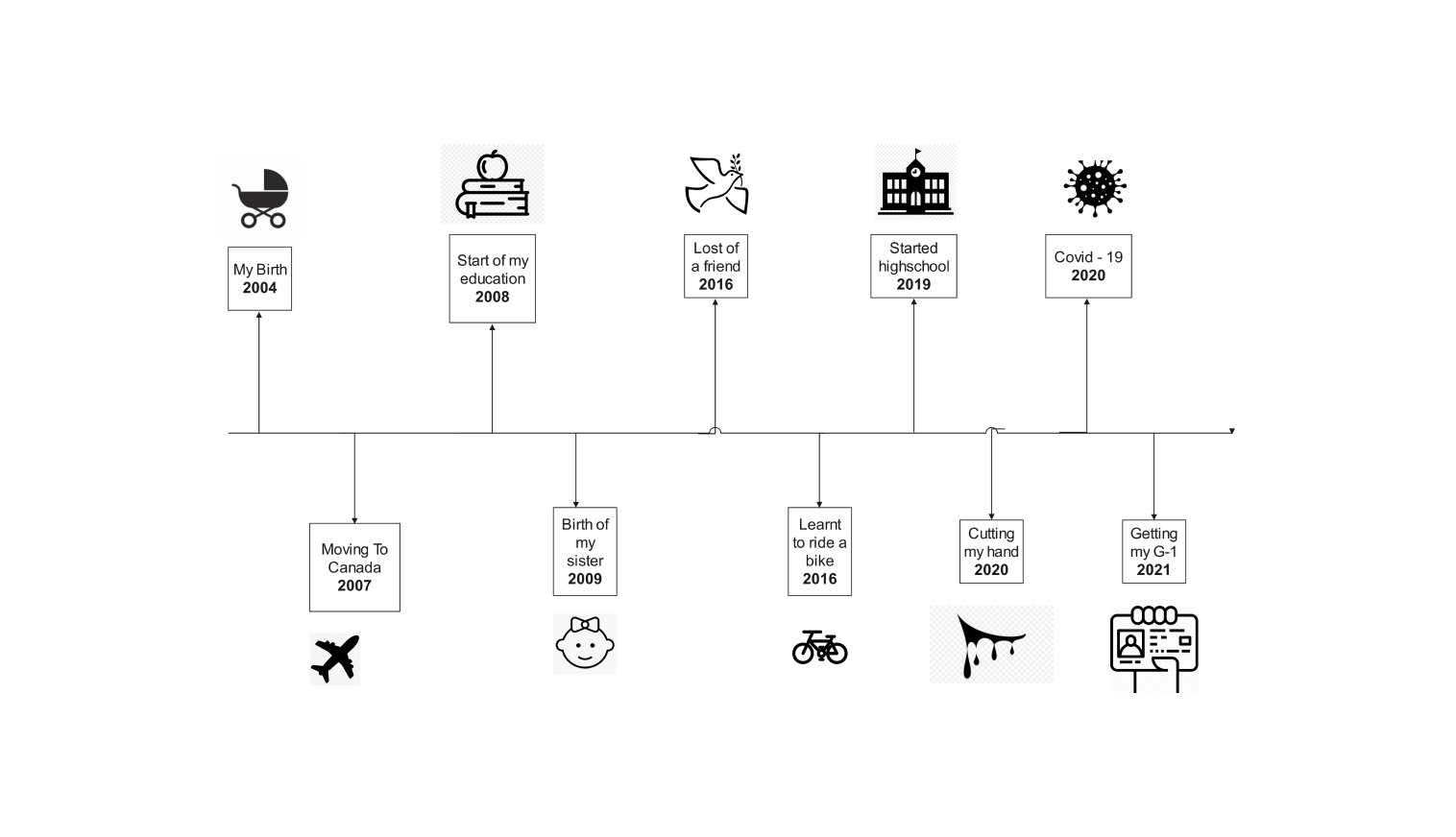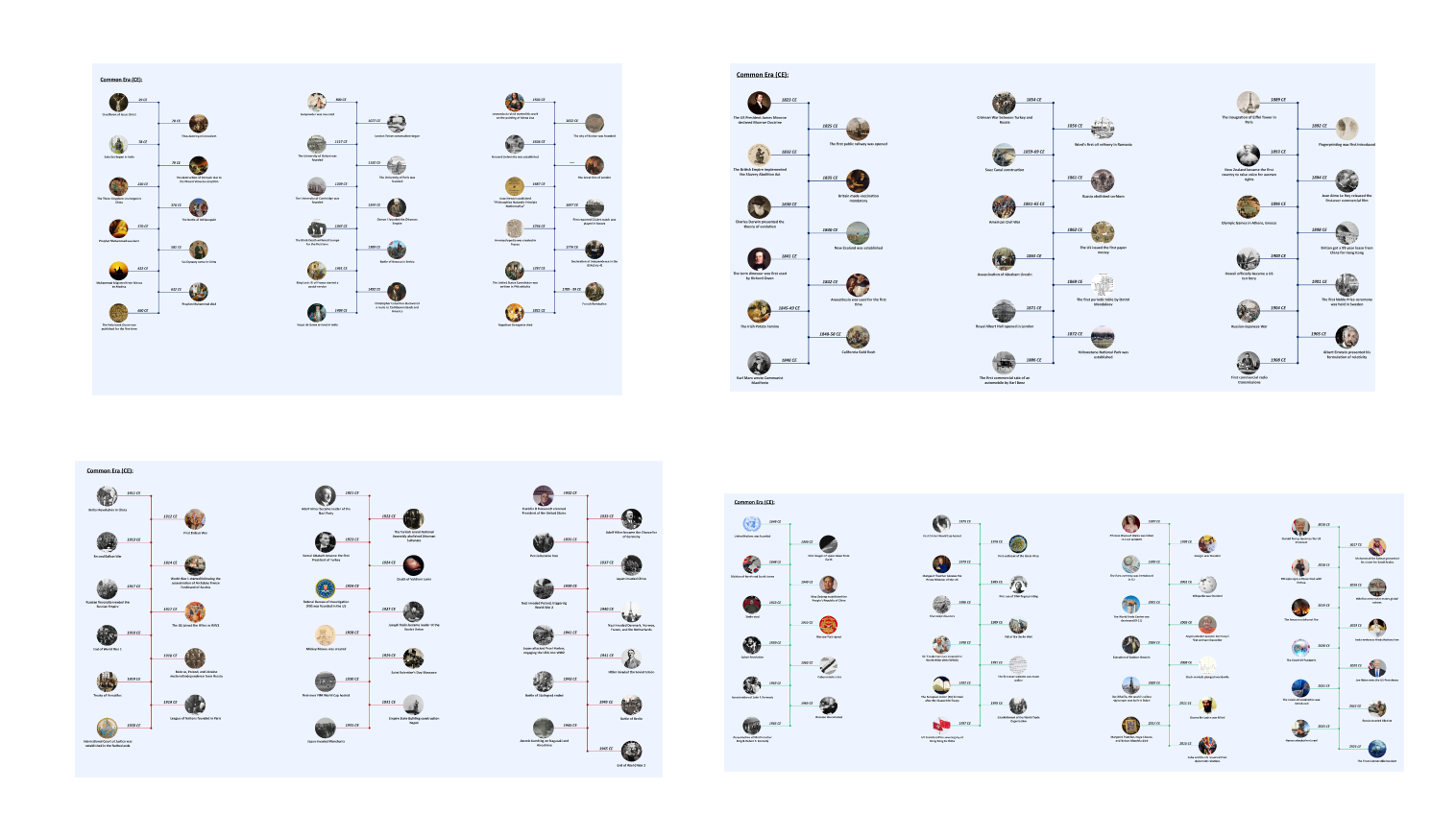- Templates
- Timeline templates
- Project timeline
About this template
This project management timeline shows a complete set of what’s needed in a project and when it should be done. It covers four aspects: concept development, system design, detail design, and testing.
For example, the market analysis should be done from January to April in concept development. Then, the Feasibility studies are done around mid-April to mid-July, while the Cost Estimates are performed from June to October.
Other parts of the timeline, such as System Design and Detail Design, are simultaneously done until September-October, along with the testing period. This timeline gives the team a brief idea of what and when things should be done.
While a project management timeline works this way, it’s also important to note dependencies in task tracking so team members can start immediately with their tasks.
How to use this template
Proceed to edit the template by clickingUse this template.
Customize your timeline within EdrawMax Online. Edit the dates and the length of the tasks by adjusting the sizes of the elements.
Edit the text within the elements by double-clicking on them. Additionally, you can change the color/styles by right-clicking them and using the customization bar.
Share the timeline with your team by exporting them. You can use the SVG, PPT, PDF, or JPG formats.
Benefits of the project timeline template
A Project Management Timeline simplifies project planning and execution by visualizing tasks, deadlines, and milestones. It offers a clear roadmap for teams to stay organized, prioritize tasks, and allocate resources effectively.
Enhancing communication and transparency ensures everyone is aligned and informed about project progress. A project timeline helps spot problems early so teams can fix them and adjust schedules. It boosts transparency and keeps everyone on the same page about project progress and goals.
Utilizing a Project Management Timeline ultimately enhances project transparency, accountability, and overall success by ensuring everyone is aligned and informed about the project’s progress and objectives.
FAQs
-
Which are 4 things a project timeline consists of?A project timeline is built upon four essential elements:
- Firstly, it shows a detailed list of tasks to be accomplished.
- Second, it outlines the commencement and conclusion dates for each task.
- Third, it specifies the estimated duration of each task.
- Fourth, it should also provide any interdependencies between tasks.
-
How do you estimate a project timeline?Follow these six straightforward steps to nail down an accurate project duration estimate. First, list all your project tasks. Next, take a stab at estimating how long each task will take. Then, suss out any task dependencies—those relationships matter. Once that’s clear, line up your tasks in a logical sequence. Pinpoint the critical path, highlighting the tasks crucial for project success. Lastly, bring it all together in a well-crafted project management timeline.
Related templates
Get started with EdrawMax today
Create 210 types of diagrams online for free.
Draw a diagram free Draw a diagram free Draw a diagram free Draw a diagram free Draw a diagram free




